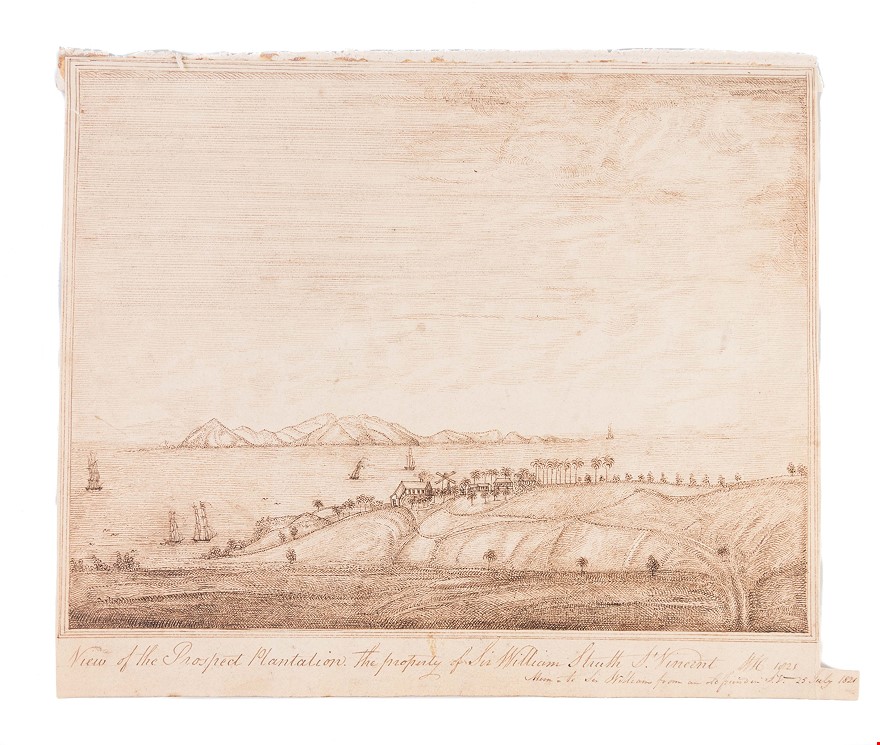View of the Prospect Plantation, the property of Sir William Struth...
STRUTH Sir William. (1821.)
£4250.00
Please contact us in advance if you would like to view this book at our Curzon Street shop.
RARE VIEW OF A PLANTATION DURING THE LAST GREAT SUGAR BOOM
Brown ink on wove paper measuring 200 by 260mm. Removed from an album with a few remnants to the verso. St Vincent, 25 July,
Inscribed "To Sir William from an old friend in S.V. 25 July 1821."
This beautifully rendered original pen and ink drawing depicts Prospect Plantation, one of St. Vincent’s prime estates, as it appeared in 1821, during the island’s last great sugar boom. The property was owned by Sir William Struth, the former mayor of Bristol and the future Acting Governor of St. Vincent. The anonymous artist, who dedicated the work to Struth in the lower register, was clearly not a professional draftsman, yet has created a highly attractive work, in the style of a line engraving. Sir William would certainly have treasured this gift from “an old friend”.
Struth was a wealthy Tory politician, landowner and merchant. He had a history of owning property in the Caribbean. In 1802, he purchased the Clifton Hill and Endeavour plantations in Trinidad, both of which he sold shortly thereafter at a profit. He was elected to Bristol City Council in 1812, served as mayor from 1814-15, and was knighted in 1815. Struth owned Prospect as early as 1817 and it was his primary residence in the years 1817-33. It was one of three plantations Struth owned on the small but fertile island: the other two being Fancy and Richmond Hill. This image captures the plantation during the last great sugar boom, just prior to the 1833 complete abolition act, which would have an enormous impact on the fortunes of plantation owners in the Caribbean. In fact, Struth submitted a compensation claim for Prospect Plantation, dated February 22, 1836, in which he claimed that the estate employed 315 slaves, setting his compensation at £8,513 18s 10d, then a very large sum. In spite of Struth’s political connections, his claim was rejected and the Struth family never received so much as farthing in emancipation compensation.
The view is taken from a perspective looking southwest, from a height above the plantation, which is location on the southernmost tip of St. Vincent. Prospect’s Great House, windmill (for grinding cane) and supply buildings occupy the top of a rise, surrounded by palms, while the cane fields cover the slopes below. The sea beyond features several sailing vessels, while Bequia, the northernmost of the Grenadines, about ten kilometres distant, appears in the background. Prospect’s original wooden plantation buildings, as depicted on the present view, do not survive, having perished during the later nineteenth century. However, the Prospect name lives on to this day as one of St. Vincent’s prime residential and vacation areas, only a few kilometres from the island’s capital, Kingstown.
Original manuscript drawings of West Indian plantations from the slavery era are rare, and this one is particularly desirable as it records an important property owned by an eminent presence on the island. Its survival can be attributed to having been pasted into an album.
.
Stock Code: 228749




